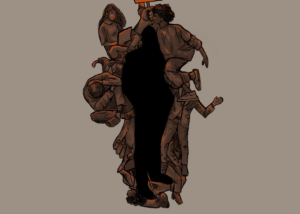SafeRides is a valuable program run by the Georgetown University Police Department that gives students, staff, and faculty the option to avoid walking alone at night. Although the Georgetown neighborhood is statistically one of the safest in D.C., the University community ultimately lives and studies in an open urban environment. Email notifications of area and campus crime, including intermittent cases of burglary and theft, ping periodically into our phones and emails. And, as a Sept. 13 bias-related incident involving a gay slur that resulted in the hospitalization of a student unfortunately demonstrates, public safety incidents can directly threaten student safety.
While GUPD deserves praise for establishing SafeRides, the program’s growing inefficiencies and issues picking up students promptly undermine its ability to protect students at the times of day when the probability of crime is highest. SafeRides’ use of contracted dispatchers to coordinate rides Thursday through Saturday evenings, when students often host off-campus parties in the comparatively faraway Burleith and West Georgetown neighborhoods, is deeply worrying.
GUPD should have made contracted dispatchers clearly aware of the program’s invaluable contribution to middle-of-the-night student safety from the beginning. The fact that a meeting between GUPD Chief Jay Gruber and the contracted dispatchers occurred last week to reinforce this concept strongly calls into question whether such a conversation had ever taken place in the past.
Calls for an overhaul of SafeRides have come from all corners—SafeRides student drivers, students attempting to use the service, and GUPD itself. The meat of the issue is the University’s persistent description and promotion of SafeRides as a readily available and reliable service for students when this promise has proven difficult to deliver. Given the limited number of SafeRides drivers and vehicles, it is understandable that dispatchers sometimes tell callers to wait for the University’s neighborhood shuttles, the routes of which overlap with SafeRides’ coverage area. Nevertheless, calling SafeRides currently carries the expectation of swift pickup; waiting for buses is often not feasible, however, especially if waits amount to as long as half an hour. Delivering on its image of being a prompt service might eliminate the need for students to call the Department of Public Safety, which the SafeRideswebsite recommends in cases of emergency.
GUPD must overhaul SafeRides to improve response time, better train contracted dispatchers, and articulate more clearly when students should expect to wait for a bus instead. Ultimately, waiting alone on a street corner late at night is more dangerous and no different than walking back to campus at a similar hour. In order to truly prioritize student safety, SafeRides has an obligation to Georgetown students to live up to its name.




